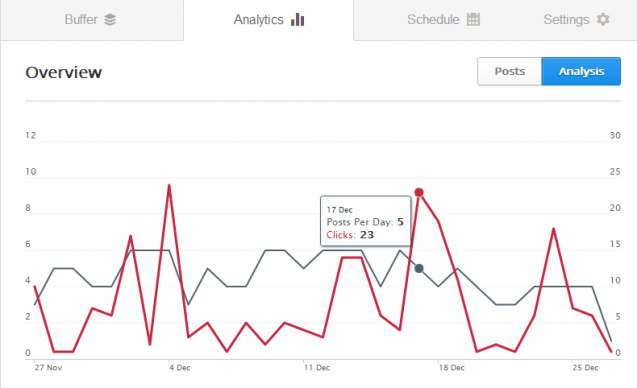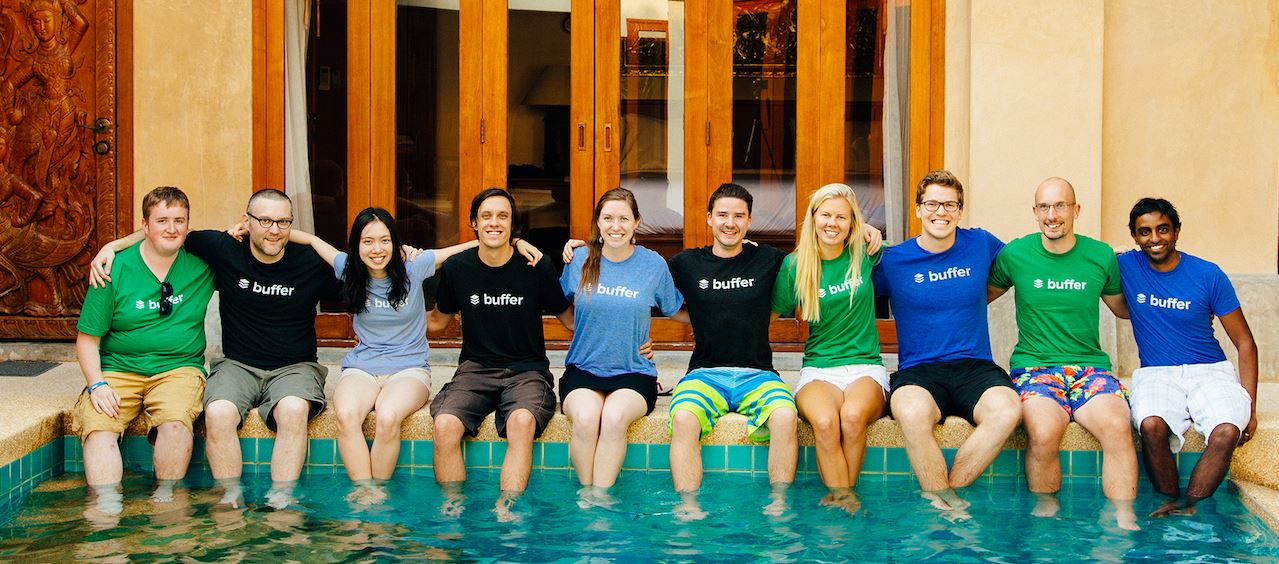Buffer, the startup behind a scheduling platform for social media sharing, has been all over the news lately since they published all employees’ salaries as part of their commitment to a ‘default to transparency’ culture. We reached out to co-founder Leo Widrich to ask him more about life at his seed-funded, 13-person company and to find out more about their latest release, Buffer for Business.

I’ve read the history of Buffer, but I’d like to know your account of how it all got started.
 Leo Widrich, Buffer co-founder
Leo Widrich, Buffer co-founderDefinitely, so Buffer was first started in 2010 out of Joel’s bedroom in the UK. It started with the simple idea that Joel wanted to improve how he sent out Tweets. He wanted a more convenient and easier way to share to share great articles, quotes, and so forth, and that’s how Buffer was born.
Since then, we’ve built out Buffer considerably, adding multi-social network access, like Facebook, LinkedIn, and Google+, then more powerful social analytics, browser extensions, and more.
Have you had a moment when you felt like you had “made” it, that you had a product and a business that was successful? (Like this goosebump-y video :))
Love this video!
That’s a great question and it’s actually a quite distinct story that I remember. About 8 months after Buffer started, we had a technical issue and the site went down. On that same day, we received an email from a customer. He was so angry and I recall he said:
“Because your product isn’t working, I can’t run my business.”
At that very moment, whilst it was a very tricky situation, I had this incredible goosebump-y feeling you described. Someone couldn’t run their business anymore because of something we have done? I was blown away!
Did you always have a vision for Buffer to have a business version?
Ah, this is interesting, so actually, for the longest part of the last year and even before that, vision for Buffer was to be completely consumer facing, at most, very small business focused.
However, over time, we’ve received such incredible interest and feedback from our awesome users, who wanted to use it more and more for their businesses. So it was a natural shift that we wanted to embrace with the new Buffer for Business.
Have any other companies (and their products or ideals) shaped what you wanted Buffer and Buffer for Business to be?
That’s a great point, we generally try our best to take inspiration mostly from our own users and our own data. So we haven’t actually focused too much on any other companies.
A key pain point, that a lot of our users mentioned to us, was more powerful analytics and exporting options, so that was a key area we focused on for Buffer for Business.
Another one was team collaboration, [which] was a big missing gap before, so we tried to fill that too. Both of these things were mostly feedback internally from our existing users.
The biggest feedback point we’ve received so far are the new analytics charts that Buffer for Business contains. It gives you a Google Analytics style overview of how you’re doing with social, how your different metrics, like clicks, retweets and likes compare with each other and how you can improve.
 Screenshot of Kelsey’s Twitter account analytics on Buffer for Business
Screenshot of Kelsey’s Twitter account analytics on Buffer for BusinessHow has your customer service helped launch and maintain your latest offering?
Hugely, that is for sure! We’re receiving over 5,000 customer emails every month and I believe that is one of our biggest assets. Through that we are constantly at the pulse of what our users feel and we’ve used a lot of that information to come up with the new Buffer for Business.
How many businesses have signed up for Buffer for Business so far?
Even though we’ve only been going a few months and actually just over 1 week since the open Business launch, we’ve already thousands of people register for Buffer for Business. Right now, we have a little over 300 people paying already.
Buffer For Business starts at $50 per month, for up to 25 accounts, and goes up to $150 per month:

How has your environment of ‘totally open transparency’ affected the creation of Buffer for Business?
Absolutely, we’ve tried to really be open at every step along the way. We even started to share the revenue numbers that Buffer for Business generated each month here for example. (And we continue to do so!)
I believe that having this sense of transparency has helped us a huge amount to stay in the loop with our users continually and keep our minds open for suggestions and feedback. We don’t want to operate in a vacuum and our transparency helps us a lot.
Changing the way a company does business sometimes brings a lot of criticism just because it’s not the norm. Have you experienced this because Buffer is so open?
That’s a great question, we have in fact just recently made all our salaries and our salary formula completely transparent and it has naturally brought us a lot of criticism.
The way we see criticism is as an immense opportunity to learn and improve. By being so transparent we’re opening ourselves to a lot of (smart!) suggestions and comments from anyone who has an interest or an opinion. That is incredibly powerful and helps us iterate very fast on our ideas.
Since we leave things so exposed, we also feel a sense of urgency, so there’s no way to sweep things under the carpet. That is very healthy I believe!
 Most of the Buffer Team at their recent company retreat in Thailand
Most of the Buffer Team at their recent company retreat in ThailandWhat are your next steps for Buffer as a whole and Buffer for Business?
Firstly, we want to focus on continuing to make Buffer for Business better. There’re a ton of awesome things we want to build and we want to continue to be as close with our customers as possible to solve the real core pain points super well.
Secondly, we want to also charge ahead with the existing Buffer version that is more consumer facing (our free and $10/mo Awesome [plan] version). Here, we want to really become a much more widespread product that’s incredibly easy to use for anyone needing to up their social media game.





